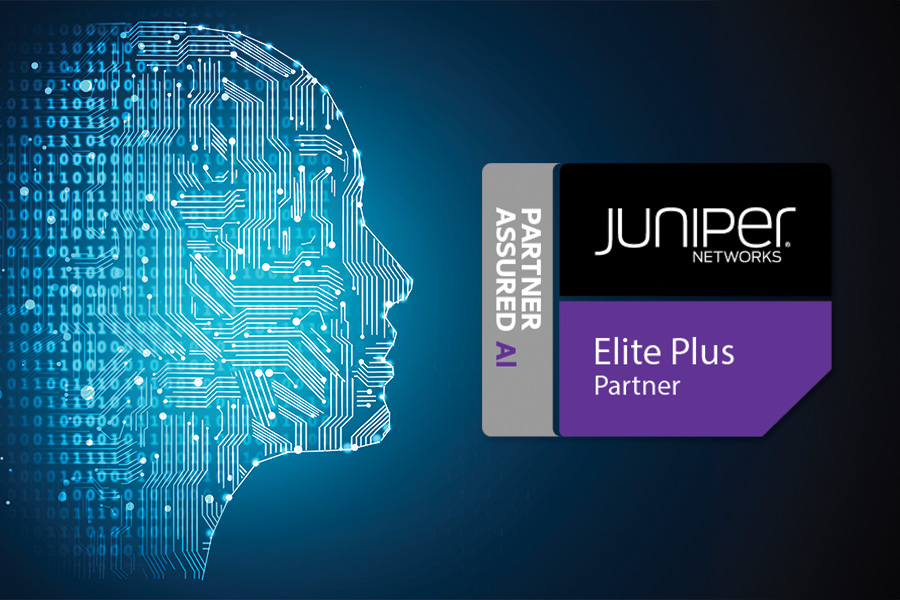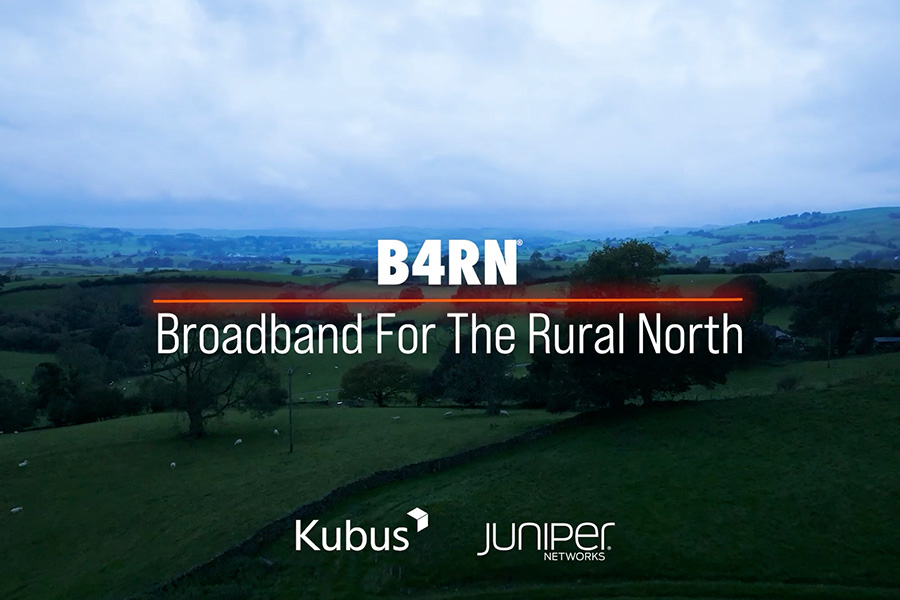In a world where network automation is dominating more and more of our technology, how can you make it work for your business?
Automation systems are becoming increasingly common across the board in the world of networks. With the ability to streamline processes, increase productivity, and reduce the space for human error, it’s no surprise that businesses are investing in this technology now more than ever. The capabilities of network automation also extend to providing closed-loop remediation of network issues, at-times, before they even occur. Enterprise customers are continuing to rely more heavily on their networks to operate, therefore issues like outages of service can have catastrophic effects on customer experience, and by extension, business success. Investing in network automation may seem like a big expense, but when your network forms the core of your business, ensuring its continuous agility and reliability is money well spent.
There are more reasons now than ever to automate your network processes, not least of all because of the April 2024 amendments to the Product Security and Telecommunications Infrastructure Act 2022 (PSTI). Cyber-security regulations which were once voluntary have now become mandatory, implementing requirements such as meeting minimum password expectations, as well as measuring your ability to provide information on reporting security issues to a specified point of contact. Breaches of these regulations can result in fines of up to £10M, or 4% of worldwide revenue – a financial loss not to be taken lightly. With that in mind, is there a better time to upgrade to an automated network?
Juniper Apstra – Your regulation compliance solution
Juniper Apstra is a multivendor automation solution, designed to build, deploy and operate data centre networks from a single pane of glass. Not only does Apstra simplify and automate your data centre operations, but it is also able to translate business intent and technical objectives into essential policy. The system is then able to continuously self-validate, and resolve issues autonomously, ensuring continued compliance with regulations. The closed-loop automation and assurance provided by Juniper Apstra powers your business with intent, providing you with actionable insights to meet your goals, with the peace of mind that you’re autonomously compliant.
Aiding you on your journey towards fulfilling the latest PSTI regulations is just one benefit of investing in the Juniper Apstra solution. One key operational feature of Apstra is its unique ability to rapidly recover from issues caused by human error. The Intent Time Voyager feature of this software makes for rapid resolution, by allowing the operator to move the entire state of the network forwards or backwards in time. With a few simple clicks you can restore your network to a specific point, rapidly reversing errors.

Additionally, Apstra has a unique ability to create a single source of truth (SSOT) in the intent datastore of the system, where all network moves, additions and changes are tracked and recorded. Usually, the internal network is designed by an architect, and then the ongoing management of the network is done by an operator.
The necessity to share information across two parties can lead to errors in communication and mistakes, which can cost your business both time and money to repair. The automated nature of Juniper Astra, coupled with its core SSOT absolves the risk of human error entirely, making your network faster and more efficient, whilst ensuring business continuity.
Digital transformation is underway everywhere, and network automation is the next step in advancing your business success. Juniper Apstra’s unique ability to identify configuration drift in real time can keep your business compliant, secure and protected, freeing you up to increase your efficiency elsewhere. Simplify your network operations, and invest in superior end-user experiences with Juniper Apstra.
Great News for existing Juniper Apstra customers, you may be eligible for a heavily discounted upgrade on your Juniper Networks QFX5100 line of Switches!
Refresh your hardware with higher speed switches and newer architectures to help you stay protected against network-level exploits. Security and compliance upgrades will enable you to detect and respond to threats more effectively, so you can stay compliant with regulatory requirements. Capacity planning and cost control will enable you to optimise the flow of network traffic, reducing latency by balancing loads across the network paths.
This promotion allows eligible customers to purchase a heavily discounted 3-year Apstra premium package, with QFX5120‐48Y hardware and related software. High speed hardware and high functioning operational efficiency, all at a heavily discounted rate. Request a quote today from the first Juniper Authorised Reseller to achieve partner assured designation.

Dell + Kubus, the perfect pair.
From the picturesque countryside of the Cotswolds, Kubus serves a global community with a distribution network that reaches every country in the world. We’re trusted by government and multi-nationals here in the UK and abroad.
After two decades in business, we’ve developed close partnerships with world-leading tech vendors. We have partnered with Dell for the past ten years, and our relationship has gone from strength to strength within that time; we are now official Gold Partners.
Dell Technologies is one of the world’s largest technology infrastructure companies. Dell Client Solutions Group produces desktop PCs, notebooks, tablets, and peripherals, such as monitors, printers, and projectors, while Dell EMC Infrastructure Solutions Group produce servers, storage, and networking.
Why Dell?
We partner with Dell because, quite simply, they are the best in their field. Their servers, storage, and hyperconverged infrastructure make the cloud work harder for your business. Dell is faster, more cost effective, and comes with five-year guaranteed support.
“We partner with Dell because, quite simply, they are the best in their field.”
It’s not just speed that makes Dell our vendor of choice. Dell servers are cheaper to run and because they use less power, it means they require less cooling, which saves you money every month.
Dell specialises in making technology more accessible. They do this by providing highly scalable options that will help your business work smarter in the cloud, whether it’s a home office or a data centre. With cost-effective equipment and a variety of flexible payment schemes on offer, you’ll never overpay for server or storage space that you don’t use.

Why do Kubus and Dell make the perfect pair?
Kubus and Dell are the obvious choice for businesses who want to get the most out of their tech investment. Together, Kubus and Dell will help you select the right equipment for your business, and we’ll save you money in the process.
As a Gold Partner, we get access to preferential pricing, which means that your procurement budget will stretch further.
With 10 years of experience selling and installing Dell equipment, we’ve got the expertise to help you select the best, most efficient technologies for your business goals.
Kubus add value to Dell equipment
What makes Kubus different is our ability to take care of your IT infrastructure and networking from the ground up. We can design and build data centres in any location around the world thanks to our proficient technical and logistics teams.
We’ve got the in-house experience to ensure the seamless importing of infrastructure and related hardware to over 120 countries, even if you don’t have a business entity within that country. Kubus can handle all the importation records and documentation, pay all the taxes on your behalf, and simply reclaim it during the payment process.
There are a million things that can go wrong when setting up data environments, which is why we configure and pre-test your equipment to ensure that you’re up and running as quickly and as smoothly as possible. Pre-staging gives you both the confidence that the equipment is going to work when it arrives on site, and the knowledge that you will have the latest versions of firmware on your servers. In a nutshell, you know that you’re getting the best of the best, that’ll be ready to go when you are.
“You’re getting the best of the best, that’ll be ready to go when you are.”
Why Kubus?
Businesses need speed, performance, and security to power and protect the great volumes of data and facilitate the communication flows that most organisations depend on in this day and age.
Our in-house expertise reaches across all realms of IT – from cloud networking to security. We can even offer board-level input to advocate for your organisation’s ongoing tech strategy.
Round the clock support, 24/7/365
If your tech estate goes down, your profits do too. At Kubus, you get round-the-clock access to our IT engineers. We have total responsibility for resolving our client support tickets, so you can rest assured that help is always on hand. Kubus is your single point of contact for all forms of support, including vendor assistance and third party. All areas of support are in one easy to access place.
“Kubus is your single point of contact for all forms of support, including vendor assistance and third party. All areas of support are in one easy to access place.”
Deployments that are right the first time
Installing new tech infrastructure is a daunting challenge because every mistake can cost money. We can set up and test your new infrastructure at our facilities, getting everything installed and configured ahead of time. This minimises disruption and unnecessary downtime.
There’s no such thing as ‘the best technology’, there is only the best technology for your business. That’s what we’re here for, to bring you the right technologies for your operational requirements, regardless of scale or location.

Forcepoint: A Partnership Success Story
Forcepoint is one of Kubus’ longest standing customers, with data centres in 28 different sites all over the world. Forcepoint provide their services to 12,000 corporations in 150 countries including airlines, banks, software companies, pharmaceuticals, and automotive manufacturers.
This year, Forcepoint decided it was time to consolidate their sites and reduce their operations to 17 sites globally. So, they came to us.
Data centres are all about delivering the largest amount of power and connectivity in the most efficient way possible. For this project they partnered with Digital Realty, one of the world’s largest providers of data centres, and we turned to Dell Technologies to supply the equipment.
R640
- 2.5” or 3.5” drives.
- Easy integrations for VMware® vSphere®, Microsoft® System Center and Nagios®.
- Simplify deployment and easily scale from 3 to 1000+ nodes for software-defined storage with Dell Ready Nodes.
- Maximize performance with up to 10 NVMe drives and 24 DIMMs, 12 of which can be DCPMMs or NVDIMMs.
- Dual-socket platform for dense scale-out data center computing and storage.


R650
- Smaller PSU unit for maximised efficiency, leaving room for an Integrated Boot Optimized Storage Solution (BOSS) in the form of an m.2 SSD.
- Better built-in support for NVMe storage via H755 or H755N RAID card, for faster data transfer speeds.
- 32 DIMM slots, with a maximum memory capacity of up to 12TB.
- Support for 3rd generation Intel® Xeon® Processors, unlocking CPU’s with more cores, pins, and faster bus speeds.
Challenge 1 – The Equipment
“The biggest challenge with a project of this magnitude is scope” says Paul Bonner, the Technical Director at Kubus. “There was over £7million worth, and literally tonnes of equipment in play here, with a lot of that being legacy gear, some of which was getting close to it’s effective EOL. But the real heavy lifting on a job like this is deciding what to keep, what to replace and, critically, knowing Dell’s portfolio well enough to know what to replace it with. We reduced Forcepoint’s existing inventory of equipment of over 100 different SKUs, down to 8.”
“We reduced Forcepoint’s existing inventory of equipment of over 100 different SKUs, down to 8.”
Something that often gets overlooked on a project of this scale, is that when you buy 1000 servers from Dell, you’ll also get 1000 manuals, 1000 CDs, 1000 lots of cables and 1000 lots of cardboard inserts. We can significantly reduce the footprint of a project by consolidating the extra parts, the documentation and the packaging down to a minimum.
Why Dell?
We chose Dell’s R640 and R650 rack servers for this project because for every 5 old servers we take out, we can replace it with one new server, and we can still operate at about the same level of performance. That’s a 5 to 1 improvement on performance.
But it’s not just speed, Dell servers are cheaper to run as well. They use less power which means they require less cooling which means less money to run them each month.
They’ve got supported hardware and everything comes with a five-year support guarantee. “Dell is rock solid” says Paul, “and they’re easy to work with and extremely reliable.”
“Dell is rock solid. They’re easy to work with and extremely reliable.”
Challenge 2 – The Logistics
Logistics also played a huge part in this project. For equipment migrating from one data centre to another, the shortest distance between move locations was 2.5 miles, but the furthest distance was 861 miles between San Jose and Phoenix. We also shipped equipment from the UK to Singapore, South Africa, and Australia for full new data centre builds. The practicalities of getting large amounts of equipment across great distances played a huge role in the successful delivery of this project; Kubus’ in-house logistics experts are well versed in the customs requirements for shipping globally for these large kit deployments.
We ship to over 123 countries on an annual basis and manage it all in house. We can handle all the importation documentation and are able to offer DDP (Delivered at Place) shipping terms. Leveraging our partnerships with specialist IOR service providers we are also able to offer the customer IOR and EOR (Importer/Exporter of Record) services which is particularly useful for customers who do not have registered business entities within the destination country. This service allows a local customs agent to act on the customer’s behalf as the importer/exporter, handling all the required formalities and ensuring the customer receives the equipment at the right time, in the right place.

Challenge 3 – The Deployment
When you’re deploying 150 servers in a data centre, timing is everything. Running over time is simply not an option for these types of projects, because thousands of people will be logging in on Monday morning and they can’t be pulling data from locations outside the region for any length of time. These projects are 24/7 operations. Any shut down period must be tightly coordinated to ensure the utmost efficiency so that the Forcepoint tech team has enough time to install the operating systems on all the new servers. “We shut down 7pm Friday, and had 36 hours to get the data centres moved across the country and back up and running by 7pm Sunday night.”
The Result – Savings
Data Centres cost a lot of money, with a typical DC cage costing ~£50k a month to run. With an overhaul like this recent project, where we were able to cut Forcepoint’s server numbers by a ratio of 5 down to 1, alongside optimising their networks and storage, we were able to save Forcepoint approximately 80% of those running costs.
The Result – Operation
We take pride in the environments we create; we make them look good and make sure they’re easy to navigate and maintain. Because it’s not us who’s going in there if there’s a problem down the line, it’s the people on site and they need to know where everything is.
Part of preparing the site for the client involves prestaging the equipment. This includes things like testing and configuring, labelling up all the management IP addresses for each server, and burn testing everything for 48hrs.
Pre-staging means that you won’t lose money on teams of technicians waiting around for broken, missing or damaged parts to be replaced. You can literally take the equipment out of the box, plug it in and start using it.
The Result – Performance
On the completion of this project, Forcepoint, despite downsizing from 28 to 17 data centres, will have potential to expand and add servers in the future. Ultimately, it’s their customers who will enjoy a better experience. The new equipment and networking performance offers an improvement in latency from 300 milliseconds to around 40 to 50 milliseconds.
So, if you’re wondering why a billion-dollar company in the US wants to deal with a small team of 60 people operating out of the Cotswolds? It’s because we know the Dell portfolio inside out. We know the Forcepoint network inside and out because we helped design, build and deploy it. As testament to the work we have carried out so far, and the performance improvements realised, there are now a further 5 new data centres scheduled for next year and all Forcepoint have to do is tell us where they want them, and we’ll take care of the rest.

Kubus win TWO Juniper Networks Partner of the Year Awards!
2024 already got off to an exciting start for all of us here at Kubus, and now there is further reason to celebrate as our longstanding relationship with Juniper accelerates further.
We are incredibly proud to share that we have received not just one, but two Juniper Partner of the Year Awards.
2023 Juniper EMEA Commercial Partner of the Year
2023 Juniper Global Commercial Partner of the Year
These awards represent our ongoing ability to drive innovative AI-Native Networking business solutions and provide exceptional attention to our customers’ experience. Our success as a Juniper partner is a result of the hard work and dedication of our committed team, who work tirelessly to deliver the best products, services and solutions to our Juniper customers.

“We are honored to have won these awards, it’s a huge testament to the team’s continued ability to exceed customer expectations. We will continue to ensure that our partnership with Juniper keeps growing and progressing, and I’m excited to see where this partnership takes us next.”
Andrew Humphrey, CEO, Kubus.
How does Kubus winning these awards benefit our customers?
- Risk Mitigation – we are quantifiably regarded as one of the most prestigious providers of the complete Juniper lifecycle.
- Breadth of Relationships – our longstanding relationship with Juniper is elevating to new heights with each coming year, allowing us earlier insights into new technologies, and a better communications channel to access the best networking solutions for your business.
- Continued Growth – we continue to rapidly progress as a business every year, and with our continued focus on development you can rest assured that you will receive not only the best solutions expertise from our team, but the most up-to-date products and services on the market.

“Juniper’s focus on leveraging the network to deliver exceptional user experiences is shared by Kubus, which is reflected in their performance over the past year. We are very pleased to recognize this with these awards.”
Dale Smith, Director of Channels, EMEA, Juniper Networks.
We haven’t received these awards because we sell our customers a box. We have succeeded because we provide our customers with a unique solution to their problem. We strive to not only meet, but exceed our customers’ expectations, offering a partnership and an ongoing relationship that goes beyond putting equipment into your inventory. We provide outstanding support, attention to detail, and unrivaled expertise to create smooth-running and sustainable network structures, safeguarding your business continuity.
We are not only the first Juniper partner to achieve the Partner Assured designation, but we continue to be award winning providers of the complete Juniper lifecycle. To find out more about how we can design a unique, customized Juniper Networks solution for your business needs, get in touch today.


Introducing the Kubus Networking Kube
In the digital age, where connectivity is the lifeblood of modern businesses and organisations, the significance of networking equipment cannot be overstated. Behind every seamless video call, every online transaction, and every data transfer should lay a robust infrastructure powered by cutting-edge networking equipment.
Providing the necessary hardware and functionality to establish reliable, secure, and efficient connections is crucial to enabling your employees to do what they do best. From routers and switches to optical equipment and SD-WAN technology, each component plays a critical role in the overall performance of your business’s network. Without robust networking equipment, communication, collaboration, and data exchange would be severely hampered.
It’s also key that when your business changes and evolves, your network can scale and adapt to support it. Whether it be to accommodate additional users, devices, or data traffic, performance levels should be consistent – even during peak usage periods. Your network should enable your business to future-proof it’s operations and position itself for long-term success.
We know that finding the most compelling Networking technologies for your business can be a complex task. That’s why we decided to simplify and condense our Networking offerings into 6 faces of the new Kubus Networking Kube. These faces include Automation & Insights, Connectivity & Visibility, Hybrid Working, Intelligent Wi-Fi, Routing & Switching, and Secure SD-WAN.
We have the tech and know-how to ensure that your networking equipment won’t let you down.
Get in touch – we’re ready to help.

We’re Juniper Partner Assured!
What is Juniper Partner Assured?
Juniper hand-selects the partners they feel have continually elevated their customers to new heights. In Juniper’s eyes, these partners have shown exceptional knowledge, experience, and commitment as a partner.
Through our continued investment in and with Juniper over the past several years, we are proud to announce that we are Juniper’s first partner to gain the Partner Assured designation.
A word from Jim Banbrook (Sales & Marketing Director) on our recent designation:
We are very proud to announce that we have received Partner Assured designation with Juniper – a testament to all the continued hard work from the whole team here at Kubus.
What does it mean for our customers?
Some of the benefits for you as our customer:
- Elevated Investment in Juniper Practice – Juniper supports us with industry-specific training to enrich our solution knowledge through continual collaborative planning.
- Dedicated to Your Long-term Success – As you grow, we will too – constantly striving to serve you better.
- Ready for Anything – Extensive vertical and technical expertise, all supported by a robust Juniper go-to-market engine.
- Complete Lifecycle Management – With comprehensive skill sets across design, deployment, and operational delivery, we can deliver full lifecycle capabilities and management.
- Independently Validated – Our skills, solutions, and approach are certified by an external verification body for superior quality and reliability.
- Making Every Connection Count – We are continually strengthening our AI and technology expertise through increased resources to deliver speed, scale, and value directly to you.
We are championed, verified, and vouched for as having superior capabilities in managing the complete Juniper lifecycle. If you want to find out how we can help your business with finding the right Juniper tech for its needs, get in touch.

B4RN – Better Connected
Broadband for the Rural North (B4RN) is a community-led project that has been helping bring hyper speed broadband to rural areas for 12 years.
When B4RN approached us for their recent network rollout, we wanted to ensure that whatever solution we provided for them served the most compelling case. To do this, we had our sales manager, Alex Hammond, work closely with B4RN to evaluate all vendors in the market.
Working as a team, we didn’t want to just provide connectivity to B4RN’s customers – we wanted to provide the best-in-class internet that they could possibly have, powered by the best technology on the market.
To hear how this impacted B4RN and the communities they provide internet for, watch and enjoy the video below.
Update: 13th Feb 2024
Juniper networks press release: B4RN Brings High-Speed Fiber Internet to over 13,000 Customers in Northern England with Juniper Networks’ Core Network Technology

Introducing the Kubus Compute & Store Kube
Compute & Store. It’s the part of your business’ network infrastructure that manipulates data and stores the results. Whether this is being done at a small scale such as office spreadsheets and warehouse record-keeping, or for Big Data calculations in climate simulations, AI language modelling, or global financial transactions; the fundamental technology requirements remain the same.
Given its highly crucial role, the process of upgrading or acquiring new compute & store technology can be a daunting task – and to make things even more complex, it’s not just the day-to-day hardware that needs to be considered. There really is a lot to think about:
What servers do you need? Plan for how much computational power you need now and in the future.
How much data do you need to store (and immediately access)? Live data that is accessed by users on a regular basis, and predicting how this will expand.
What about archiving data? Backups of inactive data often need to be kept for legal or regulatory reasons.
Have you planned for disaster recovery? Ransomware and cyberattacks can cripple a system and effective disaster recovery planning and systems can help you get back up and running with minimal disruptions.
Do you want your equipment on-premises, off-site, or both? Cloud and hybrid-cloud technologies can offer a different level of platform flexibility – and cost structure – to owned kit.
And of course, don’t forget your users. What tools are you going to provide them with to access these systems?
We understand the complexities of finding and provisioning compute & store systems. It’s for this very reason that we’ve decided to condense the key aspects above into the 6 faces of our new Kubus Compute & Store Kube: Servers, Storage, Backup, Cloud, Disaster Recovery, and End User Devices.
Each face represents technologies and solutions from world-leading compute and store vendors; solutions that we can help select, configure, and implement for your business; helping you keep doing what you do best, whatever calculation that is.
Get in touch – we’re ready to help.

Introducing the Kubus Security Kube
In our 20 years of serving the IT infrastructure industry, we’ve helped everything from startups to FTSE100 businesses find comprehensive solutions that provide the perfect resolution to the boundaries and issues they are facing. Whether it involves network, compute, or security solutions, our strong connections to world-leading tech providers, excellent in-house team of tech experts, and vast distribution network has enabled us to get the job done – fast and effectively.
With this level of experience, we understand how overwhelming it can be for a business when it comes to looking for new tech solutions – particularly when selecting security solutions to protect against the ever-growing threats presented by cyber criminals.
So, we decided to condense our entire security solution catalogue under 6 all-encompassing cybersecurity headers. Advanced Endpoint Protection, Next Gen Firewall, Observability, Physical Security, Privileged Access Management, Remote Worker – these are the 6 pillars that represent the 6 sides of the new Kubus Security Kube.
All 6 pillars are represented by cutting-edge solutions from world-leading cybersecurity technology vendors. Solutions that you can rely on to protect your business from current -and future- threats.
Get in touch – we’ll keep you safe from all sides.

How will AI Change the Future of Networking?
An introduction to AI in networking
Artificial intelligence. A popular conversation topic with plenty of media coverage over the last few years; we are now starting to see AI innovate and change the way things are done in a wide range of industries. From the farming industry utilising AI to gain in-depth analytics, improving crop yield – to governments using it to make data-driven decisions. Many businesses and organisations are finding ways to innovate with this highly valuable and versatile technology.
IT networking can now also benefit.
With the ever-increasing demands that networks are facing, it’s important that businesses find new solutions to ensure that their network infrastructure remains reliable, secure, and agile. If a business’s network goes down, so does their profit. Constant innovation is crucial to stay ahead of the game.
AI is a perfect tool to help with this.
How is AI affecting networking?
By utilising artificial intelligence and machine learning, businesses are offloading low-level tasks, learning more about how their networks are being used, whilst analysing and optimising the performance of their infrastructure.
A key benefit of integrating AI solutions is the opportunity to free up more time for IT teams – allowing them to focus on forward-thinking innovations, finding more ways to optimise the network and its operations. And it won’t be just the IT team that finds and implements new ways to optimise the network; with the right setup, AI-driven infrastructure will find ways to work harder and more efficiently automatically – all thanks to machine learning.
By analysing network patterns and abnormalities, AI can raise the alarm if it detects an anomaly within the network – allowing network admins to identify issues before they become critical problems. This, paired with automatic troubleshooting and self-healing capabilities, enables businesses with AI integrated infrastructure to be confident that their network will remain stable and operational around the clock.
Network security is another critical area that AI can help businesses with. Thanks to machine learning, AI security solutions can learn from previous threats and attacks to help create an autonomous, resilient barrier against future security threats and anomalies.
A more reliable user experience is also made possible thanks to AI. With visibility into the user’s end-to-end experience with the business’s network, AI can identify areas that can be made more efficient, streamlining and optimising the user’s entire interaction; in turn creating a more reliable, predictable experience.
What does AI hold for the future of networking?
As networks develop and become inevitably more complex, AI will become more intelligent and capable to match. With so many IoT devices connecting to networks and transmitting data across them, the magnitude of things that could go wrong increases. AI will be needed to help manage and administer this ever-growing quantity of IoT devices, automating and optimising any would-be hands-on tasks.
In turn, this continued optimisation will free up the IT team, enabling them to spend more time focusing on tasks that will further business goals, rather than menial, every-day tasks; helping the business elevate to higher levels of productivity.
With an increasingly data-driven world fast approaching, industries will need to harness powerful tools such as AI to sift through and make sense of it all. In turn, businesses will be able to make more impactful, data-backed decisions. An investment into AI-based network solutions is one that is certain to pay off.
How can we help you?
With AI becoming such a major driving force for progression in industries far and wide, it’s important to stay ahead of the curve with the latest solutions.
Finding the most effective AI solutions for your network can be an intimidating task, though.
Whether it be orchestrating your entire tech estate from anywhere in the world, attaining advanced insights into how your network is being used, setting up 24/7 AI-based automated network monitoring, or even utilising AI to optimise and improve your customers experience within your establishment from entrance to exit; we can help you find the solution that will provide the best use case for your business.
Get in touch today to speak to one of our experts.




